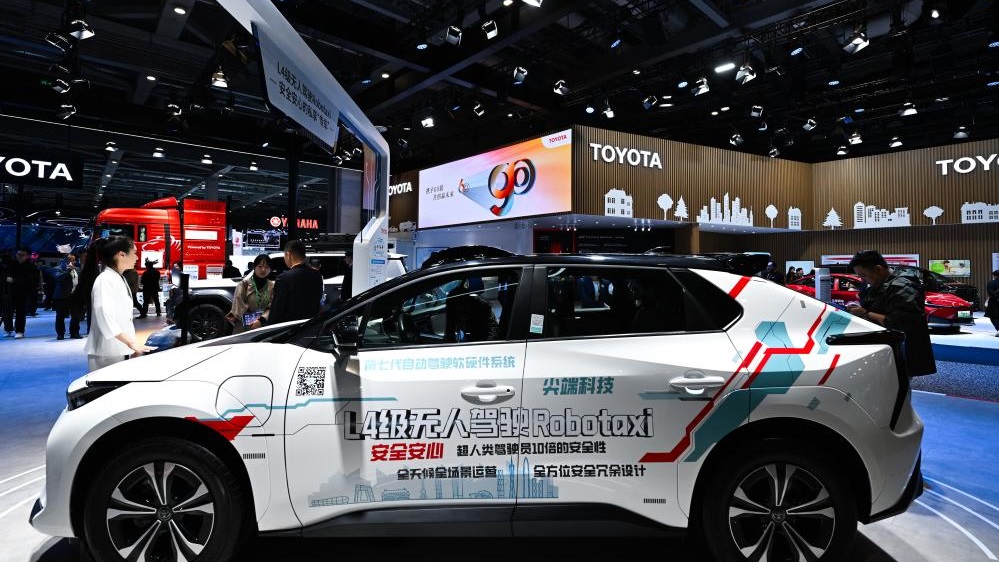More joint efforts from different parties encouraged to boost industry
Against the backdrop of global energy transformation, the aviation industry is accelerating decarbonization, and sustainable aviation fuel (SAF) has become a hot topic. Global Times has learned that many airlines have announced that they will use SAF to promote the goal of net zero emissions and have launched relevant layouts; some large oil companies have also begun to focus on related capacity construction.
The International Air Transport Association (IATA) estimates that SAF could provide approximately 65 percent of the emissions reduction needed for the aviation sector to reach net-zero CO2 by 2050, underscoring the need for significant production scale-up.
Aviation accounts for a relatively small share of global emissions but is one of the most challenging sectors to decarbonize. SAF has the advantages of high energy density and zero emissions, which brings new opportunities for emission reduction in the aviation industry. However, market analysts noted that SAF supply is limited, with a low replacement rate for traditional aviation fuel, and it requires collaboration across sectors to be further adopted in the industry.
Vast potential
The civil aviation industry has reached a consensus that sustainable aviation fuel is the most important means to achieve the goal of carbon neutrality in the industry, Grace Cheung, Cathay General Manager Group Sustainability told the Global Times on the sidelines of the recently concluded second International Conference on Green Aviation (ICGA) held by International Association for Green Aviation in Chengdu, Southwest China's Sichuan Province on November 6, 2024.
The ICGA has been regarded as a global platform to enhance awareness of climate change, exchange cutting-edge results in green aviation, and promote international cooperation. During the two-day meeting, hundreds of industry delegates from the world shared their insights into green aviation.
Data from the ICGA showed that demand for air travel is projected to increase through 2030. New aircraft may be up to 20 percent more efficient, but growth in aviation activity has historically outpaced efficiency gains.
Substituting petroleum kerosene with SAF can reduce carbon dioxide emissions by an average of 80 percent over the fuel's life cycle. With its advantages of high energy density, flexible preparation methods, and compatibility with current aviation systems, SAF is widely regarded as a key way for the aviation industry to achieve decarbonization in the short and medium term, Airbus China CEO George Xu told the Global Times on Monday.
A report released by Deloitte in September of 2023 showed that China's SAF demand is expected to reach 3 million tons/year by 2030. With the improvement of technologies and the advancement of China's "dual carbon" goal, China's SAF demand is expected to reach 86 million tons/year by 2050.
More players
As an essential fuel for aviation decarbonization, SAF has vast market potential. Currently, companies across the supply chain are vying to enter the SAF market.
Chengdu-based Tianzhou International Trading Group in Southwest China's Sichuan Province focuses on the comprehensive use of biomass resources utilizing core technologies for green energy production.
Eason Chen, general manager of Tianzhou International Trading Group told the Global Times at the sideline of the ICGA on November 6, 2024, that more than 5 million tons of sustainable biofuel capacity annually will be built in the company, and their business is really growing fast.
"China has a very strong background in terms of manufacturing, and we are catching up with the business," he added.
From the production side, major oil companies around the world currently attach great importance to SAF development. For example, companies such as Honeywell, BP, Shell, ExxonMobil, and domestic oil companies such as Sinopec all have SAF technology initiatives.
In March of this year, TotalEnergies and China Petroleum and Chemical Corporation (SINOPEC) signed a Heads of Agreement to jointly develop a SAF production unit at SINOPEC's refinery in China.
The planned unit, a joint venture between SINOPEC and TotalEnergies, will have the capacity to produce 230,000 tons of SAF per year, and will process local waste or residues from circular economy sources such as cooking oils and animal fats, according to TotalEnergies' website.
Airbus said it has started from itself and actively promoted the use of SAF fuel. At present, all existing Airbus models can run on 50 percent SAF fuel, and Airbus plans to run on 100 percent SAF fuel by 2030.
At the same time, SAF fuel has been used in Airbus aircraft delivery flights, test flights, and commercial flights. Since the first delivery of SAF fuel at the Toulouse plant in France in 2016, more than 600 Airbus aircraft have been delivered using SAF fuel, according to the information the company shared with the Global Times.
Cathay Pacific was among the first airlines in Asia to set a target to use 10 percent SAF for its total fuel consumption by 2030. Cathay Pacific launched Asia's first major Corporate SAF Program in 2022 and has since expanded it by adding new corporate and NGO partnerships.
On September 18, the National Development and Reform Commission and the Civil Aviation Administration of China held a launching ceremony for the pilot project of SAF application in Beijing, aiming to promote SAF development in China in an integrated manner.
According to the pilot work arrangement, from September 19, 12 flights of Air China, China Eastern Airlines, and China Southern Airlines from Beijing Daxing, Chengdu Shuangliu, Zhengzhou Xinzheng, and Ningbo Lishe airports will be officially refueled with SAF.
Notably, overall, the global SAF industry is currently still in early development and faces many challenges.
Cheung from Cathay Pacific emphasized the need for strategic partnerships in transitioning to sustainable aviation to support SAF supply chain growth of the SAF supply chain in the region.
Chen echoed that the demand for SAF remains low, partly due to the high cost, which makes airlines hesitant to incur higher costs. "We still want to encourage more players to join the market, and expand and lower costs in the market, and it will be better for future development, Chen said.
Photos
Related Stories
- BRICS nations eye ‘blue ocean’ in green cooperation as ties deepen during highly-watched summit
- Green transformation revives, improves traditional high-emission industries
- China makes vital contribution to global green development: experts
- Nation to help Africa advance green transition
- China's role in global green transition draws expert praise
Copyright © 2024 People's Daily Online. All Rights Reserved.









